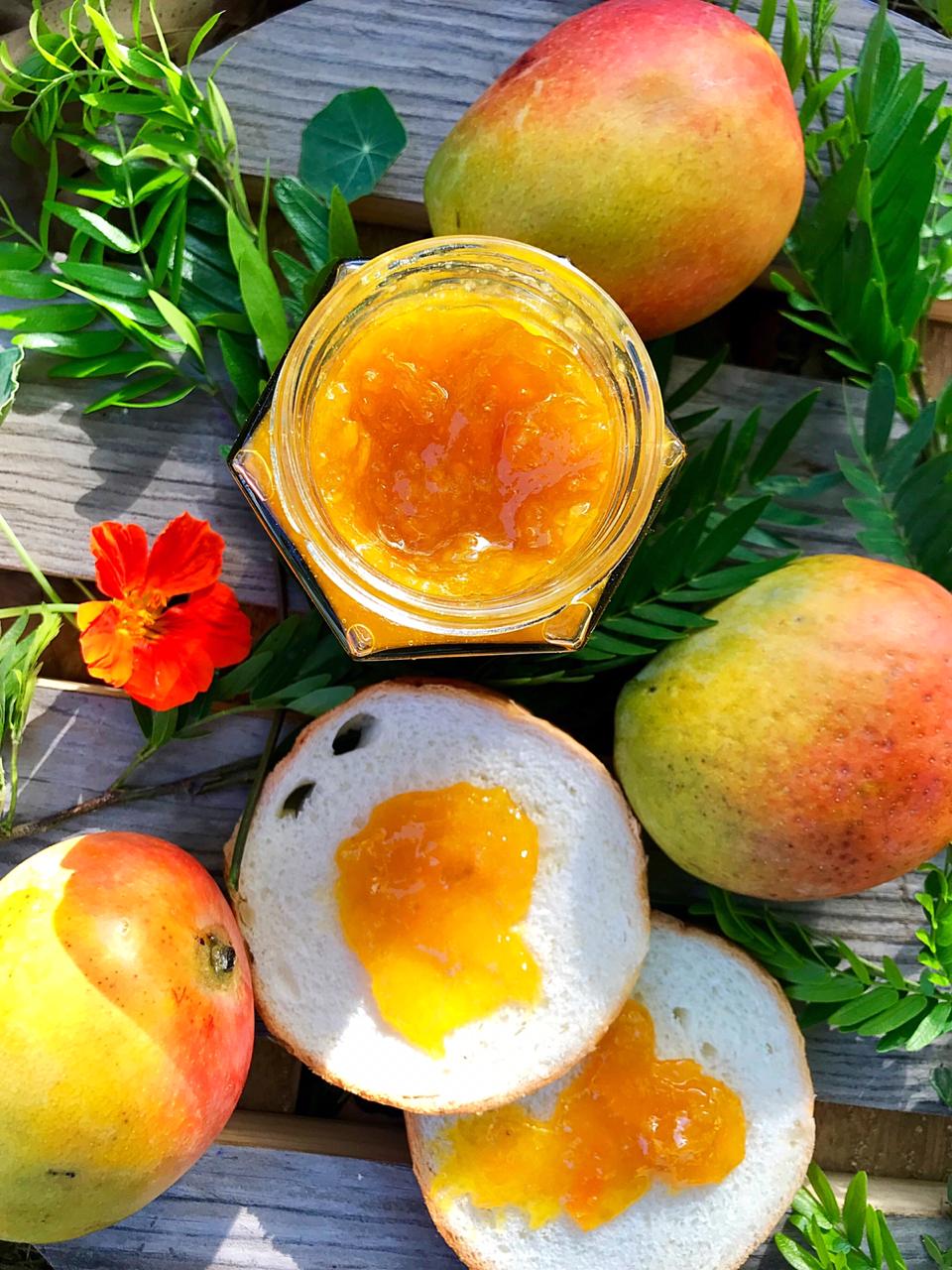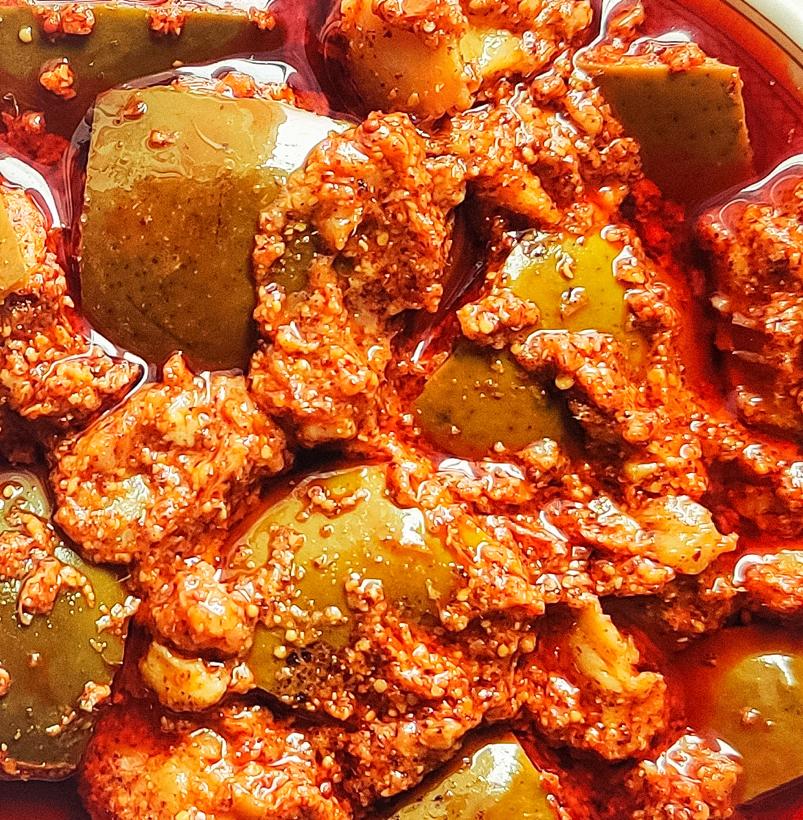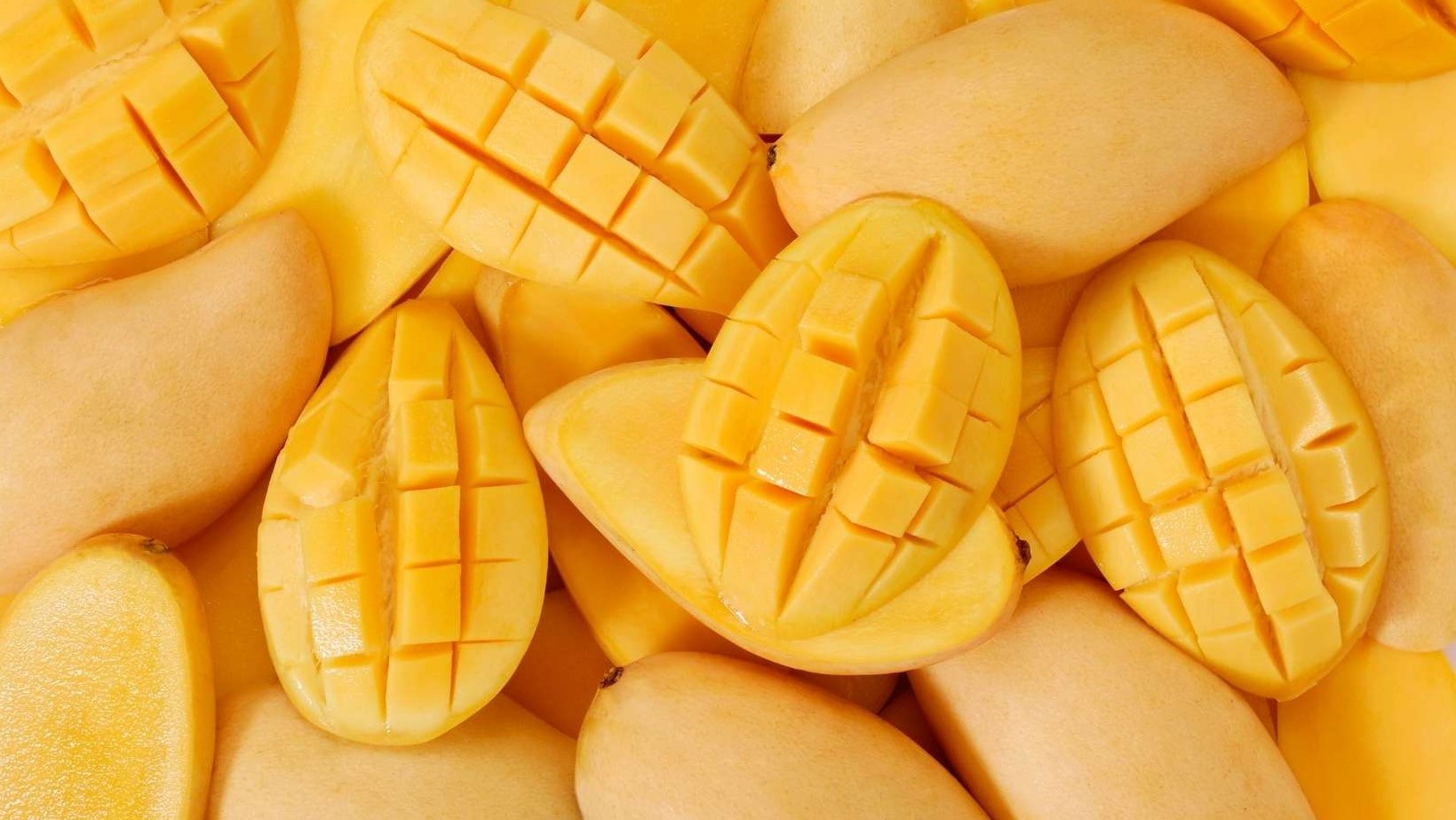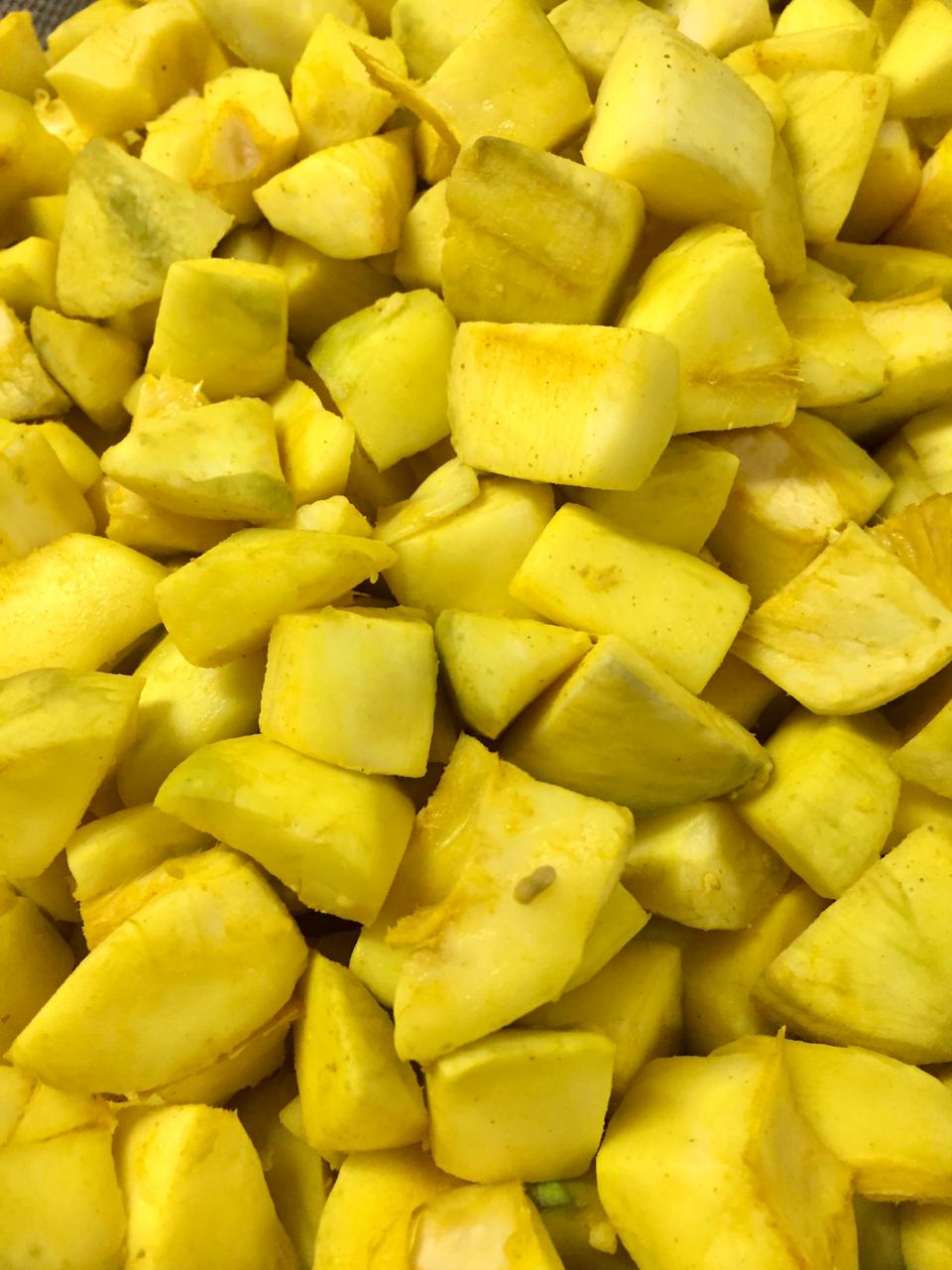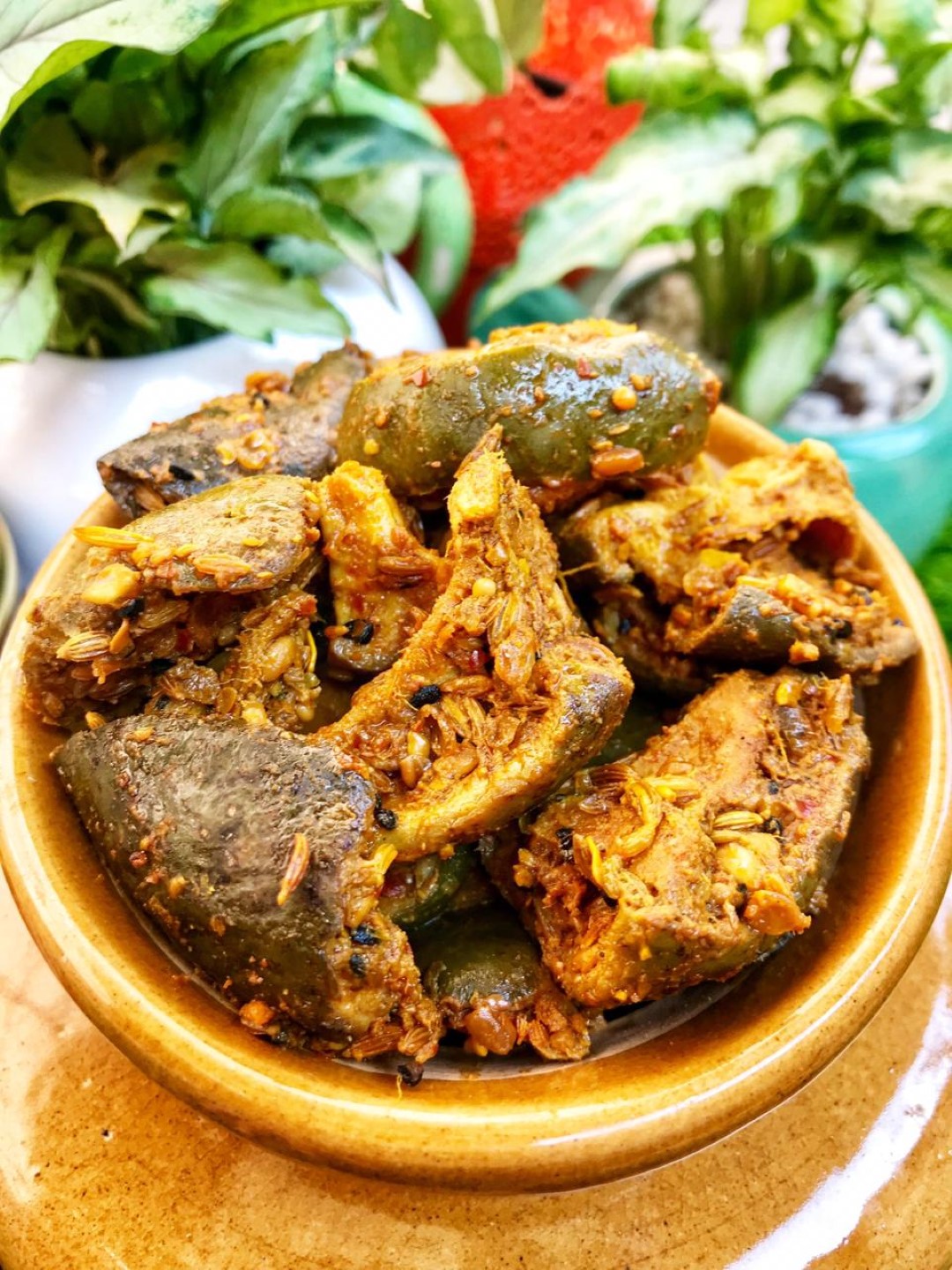
If you’re a fan of bold and tangy flavors, Mango Pickle is a must-have in your culinary repertoire! Bursting with the irresistible combination of ripe mangoes, aromatic spices, and tangy goodness, this homemade pickle is the perfect accompaniment to spice up your meals. In this post, we’ll delve into the art of making Mango Pickle from scratch, provide tips on selecting the best mangoes for pickling, guide you through the step-by-step process, and offer creative variations to customize your pickle to perfection. Get ready to tantalize your taste buds with the mouthwatering tanginess of Mango Pickle! 🥭🌶️🥒
Why Mango Pickle? 🥭🌶️ Mango Pickle, also known as Aam ka Achaar, is a beloved condiment in many cultures. It adds a burst of flavor and tang to any meal, whether it’s paired with rice, bread, or even as a zesty addition to sandwiches and wraps. The combination of tangy mangoes and aromatic spices creates a tantalizing taste experience that enhances a wide range of dishes. By making your own Mango Pickle, you have control over the ingredients, allowing you to customize the flavors and adjust the spice level to your preference.
Crafting Homemade Mango Pickle 🥭🌶️🥒 Now, let’s dive into the process of making Mango Pickle:
Ingredients:
- 4 cups raw mangoes, peeled and cut into small pieces
- 1/4 cup mustard oil
- 2 tablespoons mustard seeds
- 2 tablespoons fennel seeds
- 2 tablespoons fenugreek seeds
- 1 tablespoon turmeric powder
- 1 tablespoon red chili powder (adjust according to your spice preference)
- 1 tablespoon nigella seeds (kalonji)
- 1 tablespoon salt (adjust to taste)
Instructions:
- Start by washing the raw mangoes thoroughly and patting them dry. Remove the skin and cut the mangoes into small, bite-sized pieces. Make sure to discard the pit.
- In a large bowl, combine the mango pieces with salt. Mix well, ensuring that the salt is evenly distributed. Allow the mangoes to sit for about an hour to release their juices.
- While the mangoes are resting, heat mustard oil in a small pan over low heat until it reaches its smoking point. Let the oil cool to room temperature.
- In a separate pan, dry roast the mustard seeds, fennel seeds, and fenugreek seeds until they become fragrant and slightly darker in color. Remove from heat and let them cool.
- Grind the roasted seeds into a coarse powder using a mortar and pestle or a spice grinder.
- In the bowl with the mangoes, add the ground spice powder, turmeric powder, red chili powder, and nigella seeds. Mix well to ensure that the spices coat the mangoes evenly.
- Pour the cooled mustard oil over the mango mixture. The oil acts as a preservative and adds a distinct flavor to the pickle. Mix everything thoroughly.
- Transfer the mixture into a sterilized glass jar, ensuring that the mango pieces are fully immersed in the oil and spice mixture. Seal the jar tightly.
- Allow the Mango Pickle to mature in a cool and dark place for at least a week. During this time, the flavors will meld together, and the pickle will develop its signature tanginess.
- Once the pickle has matured, it’s ready to be enjoyed! Serve it as a condiment alongside your meals or use it to add a zesty kick to sandwiches, wraps, and more.
Tips for Selecting Mangoes for Pickling 🥭🌟 Choosing the right mangoes for pickling is crucial to achieve the desired texture and flavor in your Mango Pickle. Here are some tips to help you select the best mangoes:
- Variety: Opt for firm and unripe mangoes that are suitable for pickling. Varieties such as Totapuri, Rajapuri, or Kesar work well due to their firmness and tangy flavor.
- Texture: Look for mangoes that are firm and free from blemishes. They should be green or slightly yellow in color.
- Sourness: For a tangier pickle, choose mangoes that have a slightly sour taste. This will add depth to the flavor profile of the pickle.
Creative Variations 🌈🌶️ While the traditional Mango Pickle recipe is already delicious, you can explore creative variations to personalize your pickle. Here are a few ideas:
- Spicy Mango Pickle: Increase the amount of red chili powder or add chopped green chilies to the pickle mixture for an extra kick of heat.
- Sweet and Tangy Mango Pickle: Balance the tanginess of the pickle by adding a touch of jaggery or sugar. This will create a delightful sweet and tangy flavor profile.
- Mango-Ginger Pickle: Enhance the flavors of your Mango Pickle by incorporating finely chopped ginger. The addition of ginger adds a subtle warmth and depth to the pickle.
- Mixed Mango Pickle: Combine different varieties of mangoes, such as raw and slightly ripe mangoes, to create a diverse range of flavors and textures in your pickle.
- Fruity Mango Pickle: Add diced fruits like apples, pineapples, or pears to the pickle mixture for a unique twist. The combination of tangy mangoes and sweet fruits creates a delightful flavor contrast.
Join Us for More Culinary Adventures! 🍽️🌍 If you’re passionate about exploring new flavors and connecting with fellow food enthusiasts, we invite you to join our vibrant community of foodies! Discover new recipes, share your culinary creations, and engage in conversations about all things food. Join our secret Facebook group, Eatlo, by visiting https://www.facebook.com/groups/eatlo and be a part of a community that celebrates the joy of cooking and the love for delicious food.
Conclusion Mango Pickle is a tangy and flavorful condiment that adds a zesty touch to your meals. With its combination of ripe mangoes, aromatic spices, and tangy goodness, Mango Pickle is a versatile addition to your culinary creations. By following the simple steps outlined in this recipe, you can make your own Mango Pickle that’s bursting with fresh flavors. So, grab some raw mangoes, gather your spices, and savor the mouthwatering tanginess of Mango Pickle with your favorite dishes! 🥭🌶️🥒

